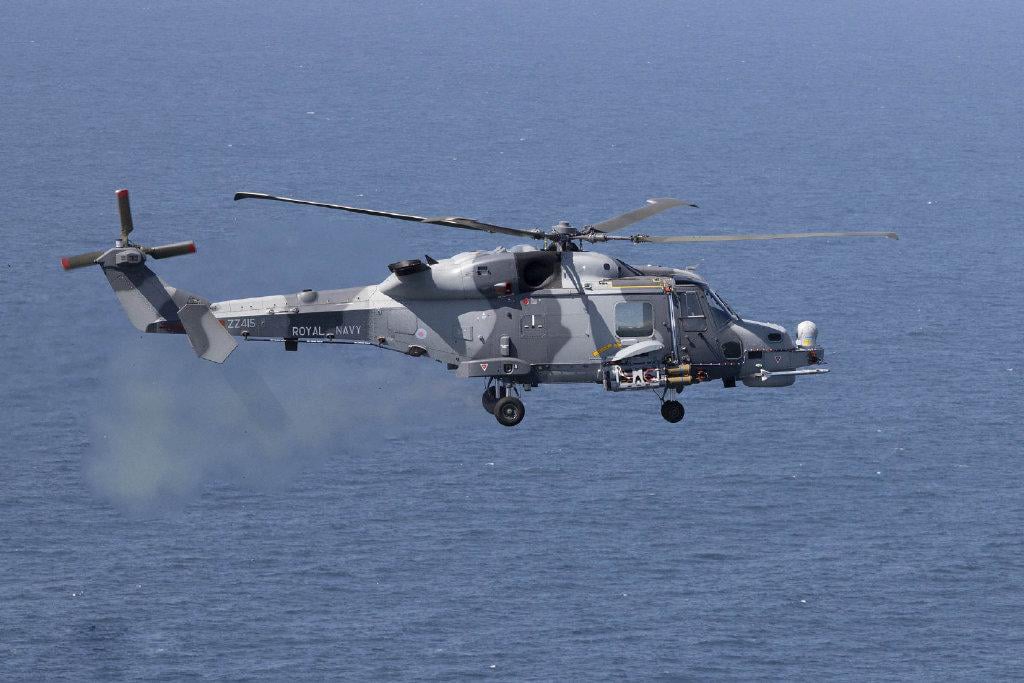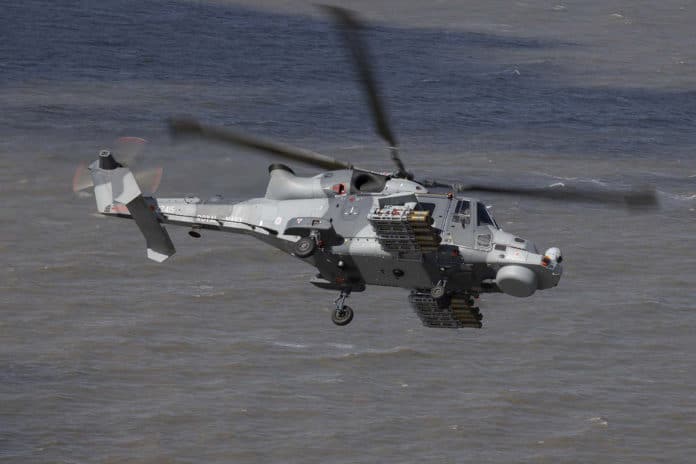Leonardo and Thales successfully performed tests with ‘Martlet’ Lightweight Multirole Missile (LMM) fired from Leonardo’s AW159 Wildcat helicopter. The test was part of the UK Ministry of Defense’s Future Anti-Surface Guided Weapon (FASGW) program and demonstrated the integration of the Martlet system into the AW159 helicopter platform.
The FASGM program concerns the certification of MBDA’s Sea Venom missiles, weighing 110 kg and with a maximum range of 20 km, and Thales’ Martlet or LMM, weighing 13 kg and with a maximum range of 8 km, in Naval Cooperation helicopters.
The fire tests were conducted from April 27 to May 21, 2020, and, despite the current COVID-19 emergency, Leonardo and Thales were able to support the United Kingdom Ministry of Defense by completing the activity.

The tests mark an important milestone in testing the new system that will arm Wildcat helicopters that will be deployed as part of HMS Queen Elizabeth’s inaugural operational deployment next year. There, the system will be integrated with a Leonardo Seaspray multi-mode electronically-scanning (E-scan) radar and electronic warfare Defensive Aids Suite (DAS), among the other things.
“The successful firings from the AW159 Wildcat, further demonstrate that the Martlet missile will be a flexible and effective tool for the Royal Navy as the Wildcat fleet embarks on its carrier strike mission with the HMS Queen Elizabeth next year for its maiden operational deployment,” said Nick Whitney, Managing Director of Leonardo Helicopters (UK).
Onboard the AW159 Wildcat LMM Martlet can also allow operators to combat aerial targets such as UAVs (Unmanned Aerial Vehicle) and other marine helicopters. Launchers are mounted on AW159 via a new weapon wing developed at the Leonardo design and production plant in Yeovil (UK) first tested last year. Each weapon wing will be able to carry ten Martlet or two Sea Venom shells, while improving the helicopter’s forward flight performance, reducing its main rotor requirements.
The Wildcat, the new configuration can carry up to 20 rockets in a new wing arms developed by Leonardo, allowing it to engage smaller targets.
